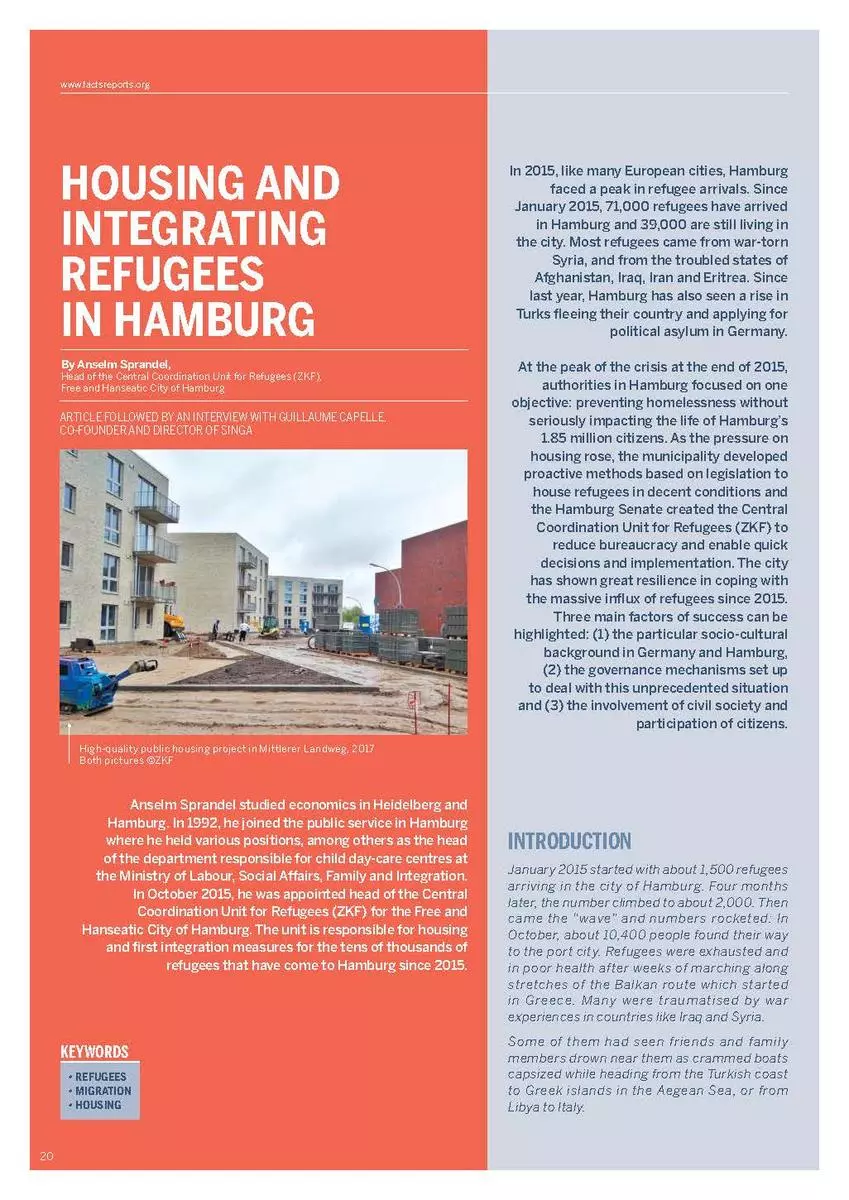By Anselm Sprandel, Head of the Central Coordination Unit for Refugees (ZKF), Free and Hanseatic City of Hamburg
In 2015, like many European cities, Hamburg faced a peak in refugee arrivals. Since January 2015, 71,000 refugees have arrived in Hamburg and 39,000 are still living in the city. Most refugees came from war-torn Syria, and from the troubled states of Afghanistan, Iraq, Iran and Eritrea. Since last year, Hamburg has also seen a rise in Turks fleeing their country and applying for political asylum in Germany.
At the peak of the crisis at the end of 2015, authorities in Hamburg focused on one objective: preventing homelessness without seriously impacting the life of Hamburg’s 1.85 million citizens. As the pressure on housing rose, the municipality developed proactive methods based on legislation to house refugees in decent conditions and the Hamburg Senate created the Central Coordination Unit for Refugees (ZKF) to reduce bureaucracy and enable quick decisions and implementation.
The city has shown great resilience in coping with the massive infl ux of refugees since 2015. Three main factors of success can be highlighted: (1) the particular socio-cultural background in Germany and Hamburg, (2) the governance mechanisms set up to deal with this unprecedented situation and (3) the involvement of civil society and participation of citizens.



